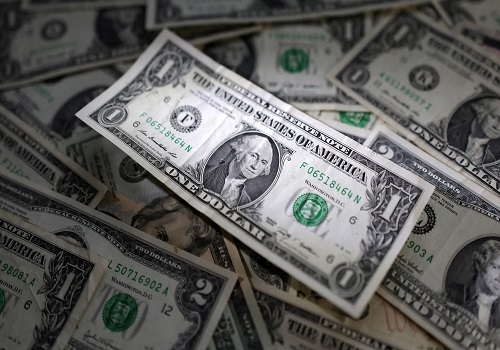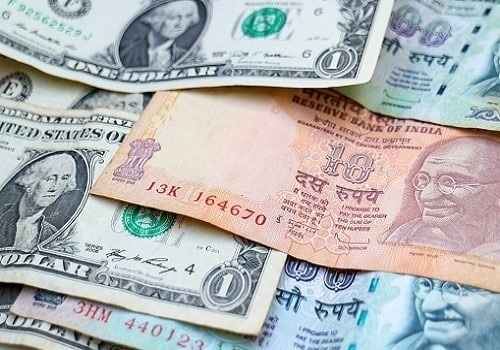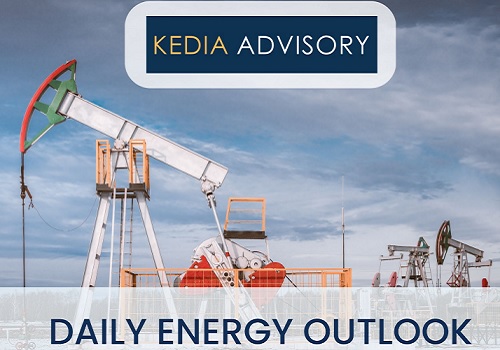Aluminium trading range for the day is 229.2-236.4 - Kedia Advisory

Gold
Gold prices edged higher by 0.21% to settle at Rs.93,451 amid heightened global uncertainty, primarily driven by U.S. trade policy under President Donald Trump. Safe-haven demand strengthened as the Trump administration launched national security investigations into semiconductor and pharmaceutical imports, signaling potential for further tariffs. Though exemptions were temporarily extended for certain tech goods, looming auto sector tariffs have added to market anxiety. Additionally, comments from Federal Reserve officials further fueled bullish sentiment. Fed Governor Christopher Waller indicated a potential rate cut if tariffs remain, while Atlanta Fed’s Raphael Bostic advocated for a cautious hold until more clarity emerges. On the global front, Goldman Sachs boosted its year-end gold forecast to $3,700, citing increased central bank demand and recessionary risks driving ETF inflows. Chinese gold ETFs saw a remarkable 29.1 metric ton increase in April's first 11 days—outpacing total Q1 inflows and surpassing U.S.-listed funds. Physical demand also picked up in Asian hubs like China, where premiums surged to $24–$54/oz, reflecting strong retail interest amid price corrections. However, India's demand outlook has softened; the World Gold Council expects 2025 consumption between 700–800 metric tons, down from 802.8 tons last year, as high prices weigh on jewellery buying. Technically, gold is showing signs of fresh buying interest, with open interest rising 1.32% to 20,678. Immediate support is seen at Rs.93,130, with further downside possible to Rs.92,815. Resistance lies at Rs.93,650, and a move beyond could test Rs.93,855.
Trading Ideas:
* Gold trading range for the day is 92815-93855.
* Gold gains as uncertainty over President Trump’s tariff plans continued to drive safe-haven demand.
* Fed’s Waller said that interest rates may need to be cut soon if Trump's large-sized tariffs remain in place.
* Currently, traders are pricing in around 85bps worth of easing by year-end, with most expecting the Fed to hold rates next month.
Silver
Silver prices edged marginally lower by 0.10% to settle at Rs.94,774 as markets absorbed mixed signals surrounding U.S. trade policy and its potential economic fallout. While U.S. President Donald Trump temporarily exempted key tech products from new reciprocal tariffs and hinted at pausing auto import levies, fresh uncertainty emerged with national security investigations into semiconductor and pharmaceutical imports. Meanwhile, Chinese President Xi Jinping reiterated concerns over rising trade tensions, reinforcing the broader risk-off sentiment. On the monetary front, Federal Reserve Governor Christopher Waller downplayed inflationary concerns tied to tariffs and signaled readiness to cut rates further if needed, prioritizing economic growth. Despite the short-term price dip, silver fundamentals remain robust. The global silver market is projected to remain in deficit for the fifth consecutive year in 2025, albeit a reduced shortfall of 149 million ounces (down 19% year-on-year). Industrial demand continues to underpin the market, with silver fabrication expected to rise 3% and cross the 700 Moz mark—driven largely by green technologies. Investment demand is also set to grow 3% on the back of improving sentiment in Europe and North America. However, jewelry demand is forecast to decline 6%, with India accounting for the bulk of the drop due to persistently high local prices. Technically, silver is under long liquidation as open interest declined by 7.49% to 15,576. Key support is seen at Rs.94,320, with further downside to Rs.93,865. Resistance is pegged at Rs.95,165, and a breakout could lead to testing Rs.95,555.
Trading Ideas:
* Silver trading range for the day is 93865-95555.
* Silver dropped as investors digested mixed signals on US trade policy and its broader economic implications.
* Chinese President Xi Jinping expresses concerns over escalating trade tensions.
* Fed’s Waller reassures markets, stating tariff inflation will likely be temporary.
Crude Oil
Crude oil prices edged up by a marginal 0.04% to settle at Rs.5,266, supported by a weaker dollar and ongoing geopolitical tensions. The sentiment also received a boost from positive Chinese trade data, which showed a sharp rebound in crude imports during March. However, broader fundamentals remain under pressure. The International Energy Agency (IEA) warned that global oil demand in 2025 is expected to grow at its slowest pace in five years, projecting an increase of just 730,000 barrels per day—a significant downgrade from last month’s estimate of 1.03 million bpd. U.S. production growth is also forecasted to taper due to escalating trade tensions sparked by President Trump’s tariff measures. Crude inventories in the U.S. rose by 2.553 million barrels for the week ending April 4, exceeding market expectations. Stocks at the Cushing delivery hub also increased by 681,000 barrels. On the product side, gasoline inventories fell by 1.6 million barrels, while distillate stockpiles dropped by a larger-than-expected 3.544 million barrels, offering some support to the market. Nonetheless, the IEA indicated that global oil supply could outstrip demand by 600,000 bpd in 2025, and the surplus could widen further if OPEC+ continues to unwind its production cuts without curbing overproduction. On the technical front, the market is showing signs of short covering, with open interest declining by 14.69% to 7,297. Crude oil is finding support at Rs.5,223, with further downside potential to Rs.5,180. Resistance is pegged at Rs.5,318, and a breakout above could push prices toward Rs.5,370.
Trading Ideas:
* Crudeoil trading range for the day is 5180-5370.
* Crude oil gains amid a weaker dollar and geopolitical tensions offering some support.
* Global oil demand will grow at its slowest rate for five years in 2025 and U.S. production rises will also taper off
* World oil demand this year will rise by 730,000 barrels per day, the IEA.
Natural Gas
Natural gas prices slipped by 2.53% to settle at Rs.285.3 amid rising production levels and forecasts for mild weather, which are expected to curb heating demand. Output in the Lower 48 U.S. states continues to climb, averaging 106.3 billion cubic feet per day (bcfd) so far in April—just above the previous monthly record of 106.2 bcfd in March. Over the weekend, daily output hit a fresh all-time high of 107.4 bcfd, further weighing on prices. Additionally, weather forecasts point to warmer-than-usual conditions through April 29, which is likely to suppress demand for residential and commercial heating. On the storage front, U.S. utilities added 57 billion cubic feet of gas to inventories for the week ending April 4, slightly below market expectations of 60 bcf. Storage levels now stand 19.7% lower than last year and 2.1% below the five-year average, indicating a tighter supply balance despite high production. On the demand side, liquefied natural gas (LNG) exports have hit a record 16.3 bcfd so far in April, buoyed by increased volumes from Venture Global’s new Plaquemines facility. According to the EIA, U.S. gas production and consumption are both expected to reach record highs in 2025, with LNG exports projected to rise significantly in the coming years. Technically, the market is under fresh selling pressure as open interest surged by 13.67% to 22,737. Natural gas is finding immediate support at Rs.277.7, with a break below potentially testing Rs.270.2. On the upside, resistance is seen at Rs.291.7, and a move above could take prices toward Rs.298.2.
Trading Ideas:
* Naturalgas trading range for the day is 270.2-298.2.
* Natural gas fell due to rising production and mild weather forecasts.
* Average gas output in the Lower 48 US states rose to 106.3 billion cubic feet per day so far in April.
* Also, warmer-than-usual temperatures are expected to persist through April 29, reducing heating demand.
Copper
Copper prices declined by 0.89% to settle at Rs.839.5, as the market digested conflicting cues from global trade developments and evolving demand dynamics. The downward pressure came despite some optimism surrounding U.S. President Trump’s indication of possible temporary exemptions on auto tariffs, aimed at giving automakers more time to shift production to the U.S. While this was welcomed as a “small step” by China’s Commerce Ministry, the broader uncertainty surrounding the ongoing trade war continues to weigh on market sentiment. Traders are closely watching the outcome of key trade discussions between the U.S. and major partners such as Japan, India, and South Korea, which could have implications for industrial metals demand. On the supply-demand front, the global refined copper market recorded a deficit of 19,000 metric tons in January, down slightly from December’s 22,000-ton shortfall, according to the International Copper Study Group (ICSG). However, when adjusted for changes in Chinese bonded warehouse inventories, the deficit stood at 17,000 metric tons. China, the world's largest copper consumer, reported a 1.4% year-on-year drop in copper imports for March to 467,000 metric tons, with first-quarter imports falling by 5.2% amid shifting trade flows due to higher U.S. copper prices driven by import investigations. Technically, the market is under long liquidation, as open interest dropped sharply by 13.56% to 4,289. Copper is currently finding support at Rs.833.5, with a breach potentially pushing it to Rs.827.3. On the upside, resistance is seen at Rs.846.2, and a break above that could lead prices to test Rs.852.7.
Trading Ideas:
* Copper trading range for the day is 827.3-852.7.
* Copper falls as trade war concerns offset auto tariff pause hopes
* China's imports of unwrought copper and copper products in March declined 1.4% to 467,000 tons from a year earlier.
* Market participants are expecting more stimulus measures from Chinese authorities to bolster consumption.
Zinc
Zinc prices declined by 0.89% to settle at Rs.250.15, pressured by ongoing demand concerns amid escalating trade tensions between the U.S. and China. U.S. President Donald Trump’s recent hike of tariffs on Chinese imports to 125%, despite a temporary 90-day pause on duties for other countries, has stirred uncertainty across industrial metals markets. The tariff hikes, coupled with weak Chinese economic data—marked by falling consumer prices and deepening factory-gate deflation—have dampened sentiment and raised fears of slower demand growth from the world’s top metals consumer. Adding to the bearish outlook, Citi Research revised its 2025 zinc price forecast downward to $2,630 per ton from $2,750, citing anticipated demand headwinds due to the tariffs. On the supply side, global market fundamentals offered mixed cues. While the global zinc deficit narrowed to 10,000 metric tons in January from 41,100 tons in December, China's refined zinc output fell significantly—down 8% month-on-month and over 4% year-on-year in February 2025. However, a notable rebound is expected in March, with production forecasted to rise over 13% MoM and nearly 4% YoY due to increased working days, post-holiday resumption, and capacity expansions. Meanwhile, production cuts like Nyrstar’s 25% reduction at its Hobart facility and expectations of reduced output from Red Dog Mine in Alaska in 2025 could support prices longer-term. Technically, the market is under long liquidation, with open interest falling by 6.51% to 2,485. Zinc finds immediate support at Rs.249, with further downside to Rs.247.8, while resistance lies at Rs.252.2, and a breakout could push prices toward Rs.254.2.
Trading Ideas:
* Zinc trading range for the day is 247.8-254.2.
* Zinc dropped amid risks for demand due to trade conflict between the U.S. and top metals consumer China.
* LME data showed zinc stocks fell by 1,350 tons, or 1.10%, to 121,800 tons.
* Data provided further evidence of a shaky Chinese economy, as consumer prices fell for the second straight month
Aluminium
Aluminium prices slipped by 0.87% to settle at Rs.232.25 amid bearish sentiment fueled by downgraded global economic forecasts and growing supply concerns. Goldman Sachs revised its aluminium price outlook downward, now projecting a Q3 2025 monthly average low of $2,000 per metric ton, as it slashed growth estimates for major economies including the U.S. and China following the Trump administration’s aggressive tariff hike. These protectionist measures have heightened global economic uncertainty, directly impacting industrial metals. On the supply front, aluminium production continues to trend higher. Global primary aluminium output dipped slightly by 0.9% YoY in February to 5.645 million tonnes, but robust production in China remains a concern. China’s aluminium output hit a record 44 million tons in 2024, nearing the government-imposed cap of 45 million tons aimed at curbing oversupply and carbon emissions. Despite this cap, production in January–February 2025 increased 2.6% YoY to 7.32 million tons, driven by better profitability among smelters due to easing alumina costs. Meanwhile, China's exports of unwrought aluminium and aluminium products grew 17% YoY in the first ten months of the current fiscal year, reflecting strong external demand despite domestic policy constraints. Technically, the market is under long liquidation, with open interest falling 3.37% to 3,501. Aluminium finds support at Rs.230.8, below which it may test Rs.229.2. Resistance is pegged at Rs.234.4, and a break above that could see prices rise toward Rs.236.4.
Trading Ideas:
* Aluminium trading range for the day is 229.2-236.4.
* Aluminium dropped as Goldman Sachs reduced its forecast for aluminium prices this year.
* Goldman also forecast a global aluminium market surplus of 580,000 tons in 2025, versus its previous forecast of a 76,000 tons deficit.
* The premium for aluminium shipments to Japanese buyers for April to June was set at $182 a metric ton, down 20% from the current quarter.
Cottoncandy
Cottoncandy futures settled higher by 1.07% at Rs.55,030 amid concerns over shrinking domestic output and rising import estimates. The Cotton Association of India (CAI) lowered its production forecast by 4 lakh bales to 291.30 lakh bales (170 kg each), largely due to lower output in Maharashtra. This downward revision, based on state association inputs as of March-end, has further tightened supply expectations. Total supply until the end of March is estimated at 306.83 lakh bales, which includes 25 lakh bales of imports and 30.19 lakh bales of opening stock. Meanwhile, CAI pegs cotton exports for 2024-25 at 16 lakh bales, down significantly from 28.36 lakh bales in the previous year. Closing stocks are also forecasted to dip to 23.49 lakh bales by September 2025, down from 30.19 lakh bales the previous year. In contrast, imports are expected to surge to 33 lakh bales from 15.20 lakh bales last season, owing to the persistent domestic supply shortfall and flat consumption trends. Globally, the 2024/25 U.S. cotton balance sheet shows a slight downgrade in exports by 100,000 bales, raising ending stocks to 5 million bales, with the average upland farm price holding at 63 cents per pound. Global production and consumption are trimmed, notably for China and Indonesia, while world stocks have been revised upwards. Technically, Cottoncandy is under fresh buying, with a 0.81% increase in open interest to 249 and prices up Rs.580. Immediate support is seen at Rs.55,030, with resistance also at the same level. A break above could pave the way toward testing Rs.55,854.
Trading Ideas:
* Cottoncandy trading range for the day is 55030-55030.
* Cotton gains as CAI expects a shrinkage in crop further and has lowered its projections to 291.30 lakh bales
* CAI has estimated the total cotton supply till the end of March including the imports at 306.83 lakh bales.
* Cotton exports for the 2024-25 season are pegged at 16 lakh bales, lower by 12.36 lakh bales
* In Rajkot, a major spot market, the price ended at 25709.6 Rupees dropped by -0.21 percent.
Turmeric
Turmeric prices surged by 3.05% to settle at Rs.14,998, supported by lower-than-expected arrivals and strong buying interest in key mandis. The upside momentum was bolstered by robust export demand, with total turmeric exports during April–January 2025 rising by 12.93% year-on-year to 1,48,690.78 tonnes, surpassing 2020's four-year high volume. However, monthly exports declined by 23.17% in January 2025 compared to December, though year-on-year data still shows a healthy 12.18% increase, highlighting continued global interest in Indian turmeric. On the supply side, yields for the new crop are expected to be 10–15% lower, particularly in Nanded, due to small rhizomes and crop rot. Although turmeric acreage increased by 10% to 3.30 lakh hectares this season, adverse weather conditions like untimely rains are likely to curb productivity, limiting the impact of expanded cultivation on overall output. As a result, production is projected to remain close to last year’s 10.75 lakh tonnes, with potential fluctuations of 3–5%. While imports surged by over 70% during April–January 2025 compared to the same period in 2024, they sharply dropped by 43.28% in January 2025 versus December, and were also significantly lower year-on-year, indicating possible tightening of domestic availability. Technically, the market is showing fresh buying interest with a 6.51% rise in open interest to 13,905. Turmeric now has support at Rs.14,472, with potential to test Rs.13,948 if selling intensifies. Resistance is seen at Rs.15,418, and a breakout above could drive prices toward Rs.15,840.
Trading Ideas:
* Turmeric trading range for the day is 13948-15840.
* Turmeric prices gained as lower-than-expected arrivals restricted supplies.
* Exports continued to pick up in the second half of 2024, with shipments reaching a four-year high.
* New crop yields are expected to be 10-15% lower this year, with the Nanded region particularly affected.
* In Nizamabad, a major spot market, the price ended at 14519.55 Rupees gained by 0.12 percent.
Jeera
Jeera prices rose by 0.86% to settle at Rs.24,610 amid support from steady domestic demand and robust export activity, particularly from Gulf countries. Tight near-term supplies, due to limited arrivals from Rajasthan and a delayed harvest in Gujarat by nearly a month, have added to the price strength. The delay in sowing was attributed to unfavorable weather conditions in key growing regions like Gujarat and Rajasthan, further contributing to the current tightness in availability. Despite the short-term supply constraints, upside momentum remains capped due to relatively low domestic demand and sufficient stock availability. Farmers are estimated to be holding around 20 lakh bags of cumin, with only 3–4 lakh bags likely to be traded by the end of the season. This implies a large carry-forward stock of nearly 16 lakh bags into the next season. Production prospects remain favorable, with India's cumin output for 2023–24 expected to reach 8.6 lakh tonnes from an area of over 11.87 lakh hectares, significantly higher than the previous year's 5.77 lakh tonnes. Jeera exports surged by 66.98% during April–January 2025 to 1,82,167.70 tonnes, reflecting strong global appetite. Technically, the market is in a fresh buying phase with open interest rising 0.75% to 6,018. Jeera has support at Rs.24,410, with further downside potential toward Rs.24,200. Resistance is pegged at Rs.24,830, with a breakout potentially leading to Rs.25,040.
Trading Ideas:
* Jeera trading range for the day is 24200-25040.
* Jeera prices gained amid price support from domestic demand, as well as export activity.
* The current season is expected to have similar production levels as last year due to better crop conditions and good sowing.
* Jeera exports during Apr - Dec 2024, rose by 70.72 percent at 165,084.40 tonnes as compared to 96,701.43 tonnes exported during Apr- Dec 2023.
* In Unjha, a major spot market, the price ended at 24967.8 Rupees gained by 0.09 percent.
Views express by all participants are for information & academic purpose only. Kindly read disclaimer before referring below views

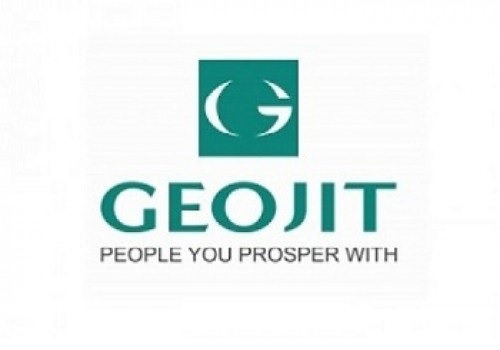


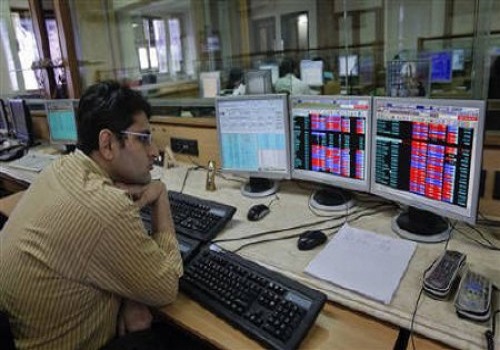
.jpg)


